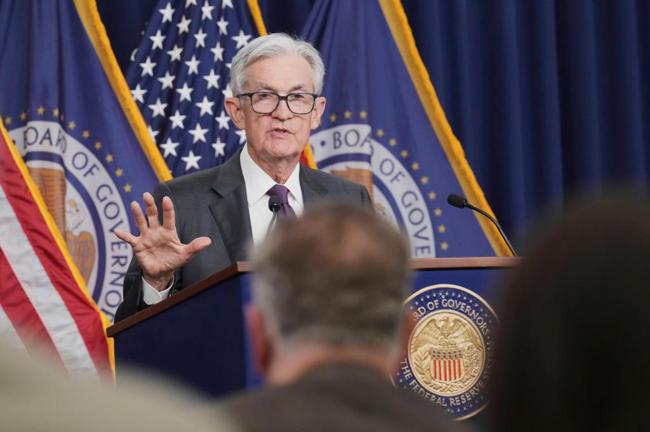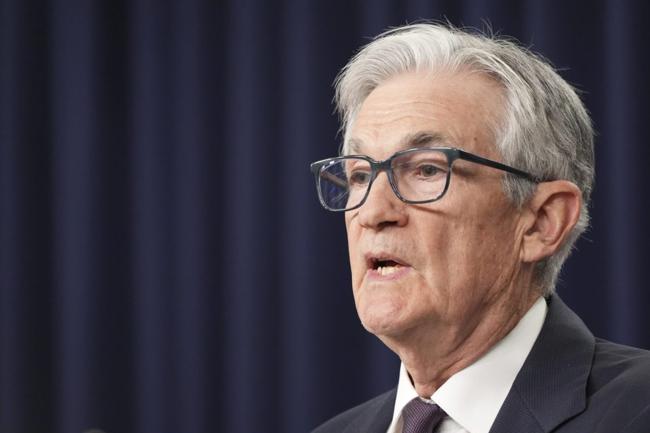Summary
The Federal Reserve is trying to decipher whiplash tariff rollouts and pullbacks that have stirred panic on Wall Street and caused challenges for businesses to plan. That has prompted officials to
Source: The Baltimore Sun

AI News Q&A (Free Content)
Q1: What is inflation, and how does it impact the purchasing power of consumers?
A1: Inflation is the sustained increase in the average price of goods and services, typically measured by the Consumer Price Index (CPI). As inflation rises, each unit of currency buys fewer goods and services, effectively reducing consumers' purchasing power. This can erode the value of savings and make it more expensive for households to maintain their standard of living.
Q2: How did the 2021–2023 inflation surge differ from previous periods, and what were its main causes?
A2: The 2021–2023 inflation surge was marked by the highest rates in decades in many countries, driven by a combination of pandemic-related economic disruptions, supply chain issues, significant fiscal and monetary stimulus, and the effects of the Russia-Ukraine war. These factors led to supply shortages and record increases in prices, especially for energy and food, distinguishing this period from previous inflation episodes.
Q3: What role does the Federal Reserve play in managing inflation, and how does it use interest rates as a tool?
A3: The Federal Reserve aims to keep inflation low and stable, primarily through setting interest rates and open market operations. By raising interest rates, the Fed makes borrowing more expensive, which can slow economic activity and reduce inflation. Conversely, lowering rates can stimulate borrowing and spending, potentially increasing inflation. The Fed must balance these actions to avoid both runaway inflation and economic recession.
Q4: How have recent global events, such as the COVID-19 pandemic and the Russia-Ukraine war, affected inflation and foreign direct investment (FDI)?
A4: Recent global events have significantly impacted inflation and FDI. According to a 2024 study, both the pandemic and the Russia-Ukraine war caused shocks to GDP growth, inflation, interest rates, and currency values, particularly affecting developing economies. These disruptions led to increased economic policy uncertainty, which hurt inward FDI in many countries, as investors became more cautious amid volatile conditions.
Q5: What have recent scholarly articles revealed about the spillover effects of US monetary policy tightening on emerging markets?
A5: A 2024 scholarly article found that tightening of US monetary policy, such as raising interest rates, leads to significant output declines in emerging markets. These effects are intensified when coupled with global trade integration and heightened monetary policy uncertainty, causing larger and more persistent economic downturns in affected countries. The impact varies across different emerging markets, highlighting their diverse vulnerabilities.
Q6: How do news and media coverage influence US household inflation expectations, according to recent research?
A6: Recent research indicates that exposure to news about inflation and monetary policy significantly shapes US household inflation expectations. News of rising inflation and easier monetary policy has a stronger impact on expectations than news of falling inflation or tighter policy, particularly in periods when interest rates are at lower bounds. This underscores the importance of effective communication by policymakers and the media.
Q7: Why do most economists support maintaining a low and steady rate of inflation, and what are the potential risks of high or zero inflation?
A7: Most economists advocate for a low and steady inflation rate because it allows for smoother labor market adjustments during downturns and reduces the risk of a liquidity trap, where monetary policy becomes ineffective. High inflation increases uncertainty, discourages investment and savings, and may lead to hoarding. Conversely, zero or negative inflation (deflation) can cause economic stagnation and higher unemployment.
References:
- Inflation - Wikipedia: https://en.wikipedia.org/wiki/Inflation
- 2021–2023 inflation surge - Wikipedia: https://en.wikipedia.org/wiki/2021%E2%80%932023_inflation_surge





